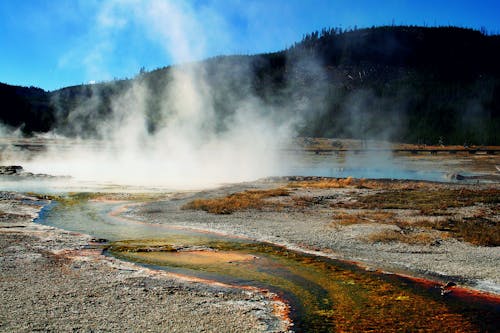To ensure that your business will keep up its good performance, it is very important that you keep your drilling rigs, together with your drill crew, to stay in their tip-top shape all the time. As for how a well-known industry insider puts it, being someone with a perfect understanding as to how and why proper rig maintenance is a crucial element for businesses to keep an eye on.
Out there in the field every day, safety and proper maintenance remain as among the top priorities. In the absence of which, if you fail to keep your rigs up to date, and if you are slacking off in cleaning it and working it on — there is no other way for it to go eventually but to go down.
But we know that this is easier said than done. Keeping parts and components in good working condition on such complex types of machines (and they’re becoming even more complex by the minute) is not easy. This is true most especially if you will subject your drilling rigs and all related equipment to extreme stress and vibration.
So, our bottom line question here is how can our current level of technology help with regard to rig safety, performance, and preventive maintenance.
1. Scheduled Maintenance
When it comes to keeping your drilling rigs in their good working order, a good preventive maintenance schedule should be in place. There are tasks that need to get done either on a daily or a weekly basis. While others may need to be performed monthly instead.
For instance, one of the things you need to have an eye on every day is the kill switches. It is also important that oil rig technicians religiously apply grease on the rig, which should be done every day. Doing so will go a long way in as far as removing dirt from the bearings is concerned. By this measure, they will remain clean most of the time.
Another added benefit of greasing is that it gives your crew members a chance to have a closer at almost every part of the rig. During this daily inspection, there is a good chance that other maintenance issues would be left unnoticed or unchecked for. This includes unspooled cables or leaking hydraulic hoses.

For mechanical rigs, not a single week should pass by that you don’t completely clean and re-grease up the Kelly bar. Then there is also hydraulic fluid maintenance, which can be done on a periodic time frame. This comes alongside changing the engine oil, electrical system maintenance, and many more.
2. Predicting the Future
With sufficient amounts of needed data, gas and oil companies are able to do so much more beyond just tracking things that transpired to predicting also what is more likely going to happen. By virtue of sensors that help in analyzing motion, current, vibration, temperatures and pressures, computers will be able to figure out how reliable a certain machine or equipment is. Or it will also help in identifying areas that can make it fail more or less frequently.
We have this high-profile example. Houston-based Chevron engineers successfully diagnosed that a gas-injection compressor is showing subtle indications of overloading. This compressor is located in Sanha Field, which is off the Angolan coast.
The attention of the onsite-crew was alerted and is just in time to fix the problem. Hence, they were able to veer away from a problem that could potentially cause loss of millions of dollars due to downtime.
The generation of software applications we have today is capable of processing and storing both historical and real-time sensor data. This is alongside drill rig maintenance data.They are also designed to learn “patterns” that belong to normal behavior and the ones that could be signifying a problem.
3. Don’t Miss a Thing
Whenever you can examine your rig, you will not want to omit or skip over anything, even the seemingly unimportant detail. For instance, it is crucial that you know how to spot check small chips in the paint early on because eventually they will snowball into rusting.
Identifying chipping in the pain allows you to repaint those areas early on and thus prevent water or moisture from seeping in, which when happens will catalyze rusting and disintegration. That kind of scenario will lay the groundwork for a catastrophe in the making.
And of prime importance here is you know the right kind of oil to use for every single application, as can be referenced in your drilling rig’s lubrication chart. The use of the wrong oil will run the risk of easily burning up a pump in a snap, which creates an extended downtime period.





